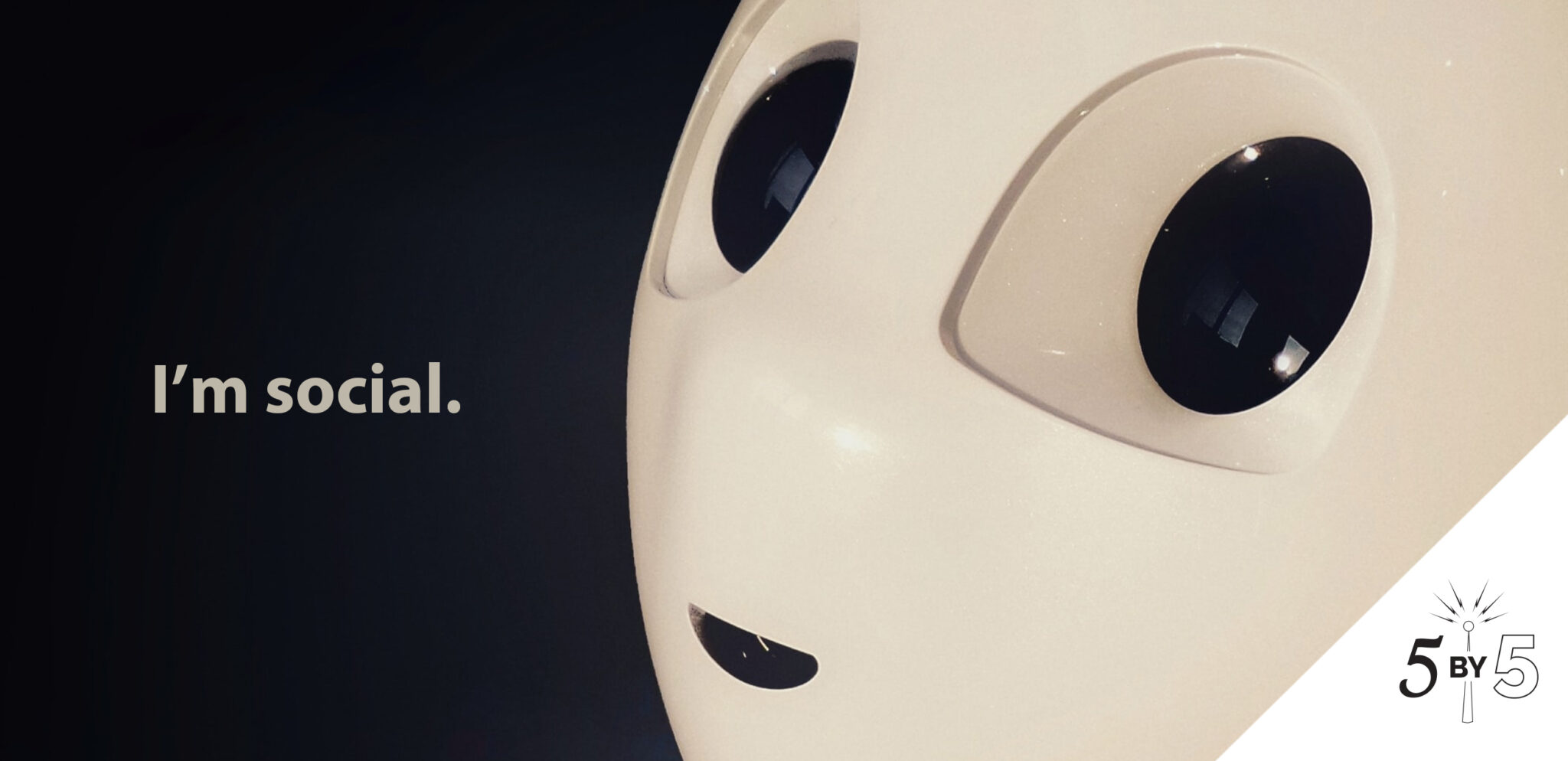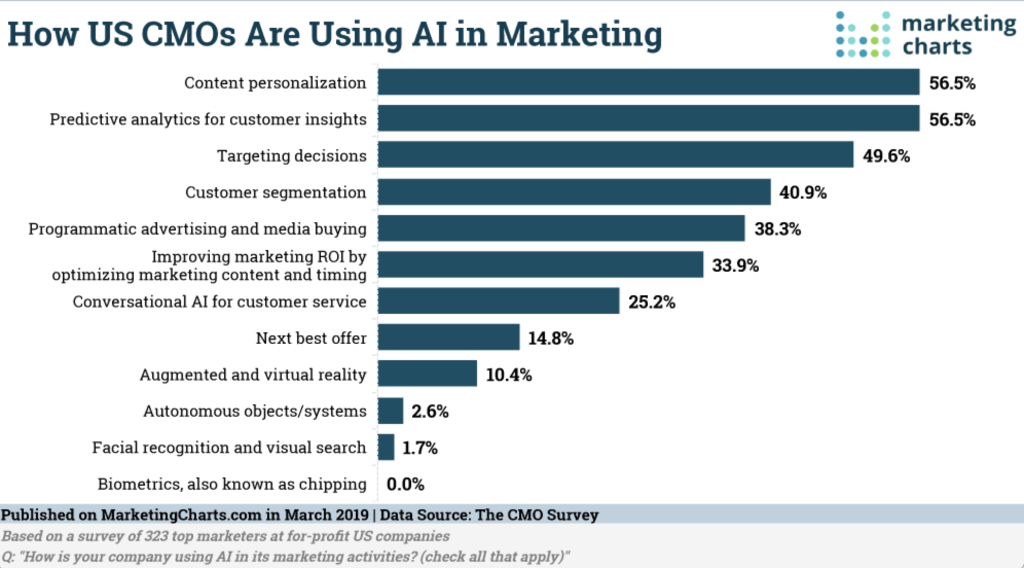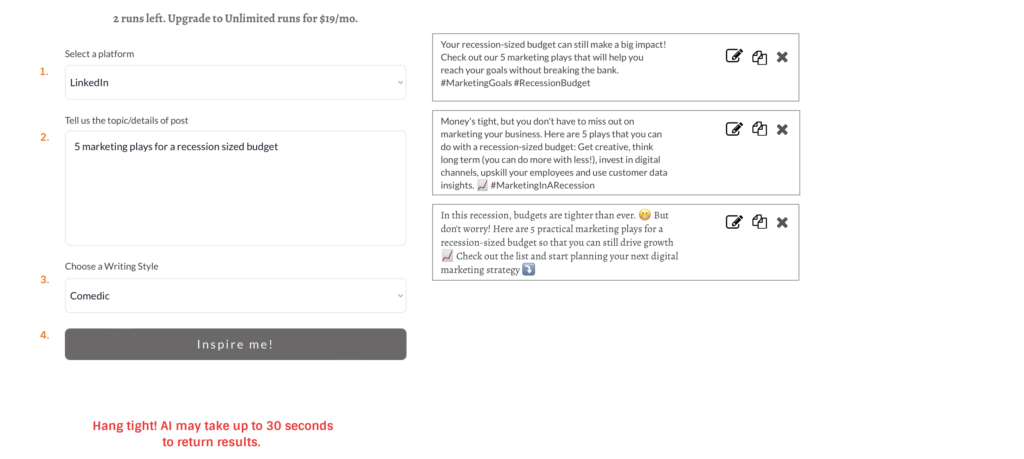
Social media marketing is an integral part of any brand’s outreach, reputation, and community building efforts. As technology continues to advance, so do the tools and techniques we use to accomplish these goals. It’s no longer enough to simply post content on a regular basis; you need to use innovative strategies and cutting-edge technologies for your brand to stand out from competitors. That’s where Artificial Intelligence comes in.
While AI has been making strides for years, it seems to be coming of age now. Conversations around AI, wide-spread adoption of the technology, and investment in AI have multiplied exponentially over the past few months.
And no other department prioritizes AI and machine learning more than marketing and sales. In fact, according to a Semrush report, 64% of B2B marketers consider AI a valuable component of their marketing strategy.
Social Media AI for B2B Marketing
Before we look ahead to how you can best use the tech in your B2B social media marketing efforts, let’s look back at some of the insights we published five years ago on the use of AI in content marketing.
In 2018, the AI market was $21.46 billion and was expected to reach $190.6 billion by 2025. By 2021, it had already reached a value of $328 billion. According to a study by McKinsey Global Institute, AI could contribute up to $13 trillion to the global economy by 2033. This equates to an average annual growth rate of about 40-50%.
The incredible growth is due, in part, to programs like Open AI’s ChatGPT, which became the world’s fastest-growing consumer application in history, with 100 million users in just eight weeks.
It sounds futuristic and complicated, but chances are good that you’re already using AI—that is, narrow AI—when you click on a recommendation from Netflix based on what you’ve watched in the past or when Outlook suggests copy to finish your sentence in an email.
Narrowing in on Social Media AI
We rarely see AI described in this way, leading people to assume that “AI is AI.” But there’s a distinct and important difference between narrow and general AI. Narrow or “weak” AI is any AI that can perform a single human task that’s narrowly defined and highly structured. An internet search for statistics is an example of Narrow AI. Completing simple instructions like writing a social post or recommending a new streaming show on Netflix is narrow AI at work. “Narrow” is a bit of a misnomer, because using these AI tools improves productivity, helps us make smarter, faster decisions, and helps brands improve experiences for customers.
General or “strong” AI is the next evolution of AI. Rather than machines applying knowledge or skill in a single construct, it means these machines would apply a set of rules or understanding to a variety of different contexts, acting intuitively, just as our brains do. Where Narrow AI classifies and labels data, General AI uses techniques that we use, such as clustering and association to identify similarities between things and group them accordingly.
Today, CMOs are using Narrow AI for a variety of marketing tasks, as you can see in this chart.

Using AI, we can gather data, gain audience insights, anticipate viewer actions, and receive predictions and recommended actions that drive performance. This faster and smarter decision making enables organizations to reduce spend, gain deeper insights, and increase ROI.
A host of brands from Adobe and Oracle to Salesforce, Sprout Social, and Hootsuite are already using AI for social media marketing. And, if your team uses a social media dashboard to plan and publish social content, they’re likely already using AI.
While it’s not yet able to effectively create meaningful, human-like content, there are applications that can write everything from LinkedIn posts to creative ad campaigns, and it’s quickly becoming more advanced.
Soon, AI will be able to analyze user behavior, track user engagement, and identify trends in order to create more effective campaigns and target specific audiences. AI will also be able to automate manual tasks, such as scheduling posts and monitoring accounts, freeing up marketing teams to focus on higher-level tasks. AI will also enable marketers to measure the effectiveness of campaigns in real time and make adjustments as needed.
How Good is AI, Really?
I asked ChatGPT to “write copy for a LinkedIn post about AI” and got this:
By optimizing processes and automating mundane tasks, AI is freeing up resources to focus on innovation and growth. With the right strategy, AI can help businesses stay agile and competitive in any industry. #AI #Innovation #BusinessGrowth
At first glance, it’s perfectly acceptable copy for a social post, hashtags and all. But this post, and everything else we tested, was generic and broad. While the above post copy is true, it doesn’t tell you anything specific. This social post could have been published by any brand or person. There’s nothing unique about it.
This is why we need people. Narrow AI can’t provide creative strategy or build meaningful relationships with customers. It can’t look at the big picture, contextualize performance, or create innovative solutions to marketing problems. However, there will likely come a time when General AI can and will be able to handle these functions.
It’s difficult to predict how quickly AI will become ubiquitous in social media marketing. That will depend on a variety of factors, such as the rate of technological advancement, the willingness of businesses to adopt AI, and the availability of resources to implement it. However, AI is already being used in various aspects of marketing, such as predictive analytics, customer segmentation, and automated campaigns.
In our 2018 blog post, we wrote that while AI agents might look like a time saver to many, someone has to write the code and develop the statistical information that informs that AI machine. Today, narrow AI can write code and develop the statistical information that informs it. AI has been used to develop various machine learning algorithms and techniques, such as deep learning and natural language processing, that can be used to generate code and develop statistical models. AI can also use the resulting statistical information to make decisions, such as classifying data or predicting future outcomes. In addition, AI can be used to identify patterns in data and develop insights from the information it is presented with.
Still, AI is limited to processing data and making decisions based on that data. It is not able to generate emotion or create stories that resonates with readers and motivates them to act. That requires creativity, which is something AI is not capable of.
But AI was capable of writing the last six sentences you read, with some editing. And it is capable of writing content in different voices. I tested this using another AI tool, requesting social copy in a comedic writing style for our February blog post. This is what it wrote:

I don’t hate it. Telling jokes, on the other hand? Not so much.
I asked ChatGPT to write a joke for an upcoming speaking engagement about social media marketing. Here’s what I got:
Q: What did the social media marketer say to the group of people?
A: “Welcome, let’s get this hashtag trending!”
Ouch.
Okay, so we can agree that AI’s sense of humor needs some work. And whether or not they can get a laugh, AI can’t replace your social media team, either. But it can optimize their work and increase their efficiency and productivity. LinkedIn now recommends creating up to 5 different versions of the same ad for the best optimization. So, rather than an A/B test, your team needs to create an effective A, B, C, D, E test. Which can double or triple the time it takes your writers to come up with each of those versions. AI can certainly help with this.
11 Social Media Marketing Tasks You Can Delegate to AI
- Write unique copy for social media ads, including post copy, taglines, titles, CTAs, and on-image copy
- Write an intro for a new blog post or article
- Create an outline for a new eBook or article
- Uncover stats that add credibility to your content
- Customized posts unique to each platform and audience
- Create thoughtful responses to negative reviews or comments on social media
- Generate content tailored to specific target audiences
- Analyze user interactions with content and optimize for maximum engagement
- Recommend strategies for improving campaigns and increasing engagement
- Automatically schedule posts and manage social media accounts
- Understand user sentiment and provide insights into customer behavior
Our take, and the professional consensus, is that AI won’t replace agencies or professionals, but agencies and professionals who use AI will replace those that don’t. So, if you’re not yet using a social media marketing tool (like Sprout Social), now is the time to start evaluating your options.
If you’re not sure how to do this or haven’t been successful in the past, your team might benefit from behind-the-handle expertise. Consider bringing in a consultant to level up their efforts, teach them new tactics, and offer fresh insights and ideas other teams have successfully implemented.
Want to find out if your brand’s social media strategy is set up for success? Take the Social Media Savvy Assessment now to find out.


